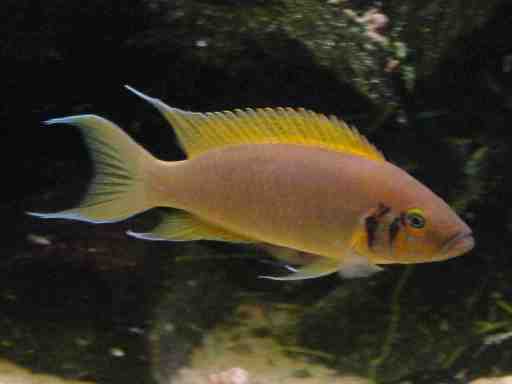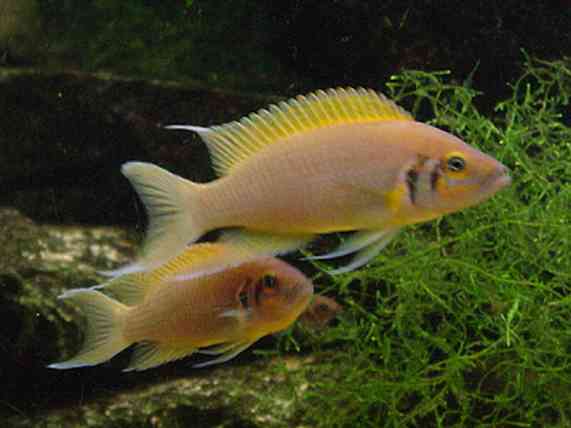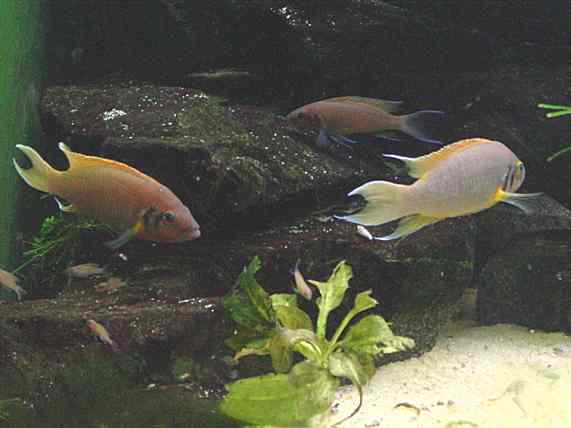With a maximum size at just over 4 inches, the flowing white tipped fins and peaceful nature of this fish make them a wonderful addition to any tank. Being monogamous in nature, pairs will immediately stake out their territories within a few days of being introduced. They will then defend their territory from all aggressors, while ignoring other non-threatening fish.
A colony of six juvenile individuals were placed into a diverse 75-gallon community tank full of other adults, with plenty of plants and rockwork for cover. After half a year, the 1 inch juveniles doubled in size and began pairing off (Shown middle), holding territories in tiny nooks and caves. Eventually, two pairs were formed and the surplus individuals were sold.
By the time they were nine months old, they began breeding, though unsuccessfully. Brood sizes were very small, and the fry fell prey within a few days after hatching. Eventually, the parents learned from their mistakes by making deeper nests and guarding against predators. Perhaps it was simply their larger physical size or larger clutch size that allowed them to raise their first few fry successfully. Eggs were laid every month and fry perished every month until eventually three fry survived their first month of life. With the recruitment of three young juveniles to help guard the nest, the next month brought another half dozen recruits. Unlike other species, which evict or abandon their young, N. pulcher young stay within the nest to help protect their younger siblings. Eventually, the nest grew in size, encompassing the entire side of the aquarium (Shown bottom) forcing neighboring tenets out. The original tiny cave grew in size and complexity until all the sand was excavated from the area, providing ample shelter for future broods.


